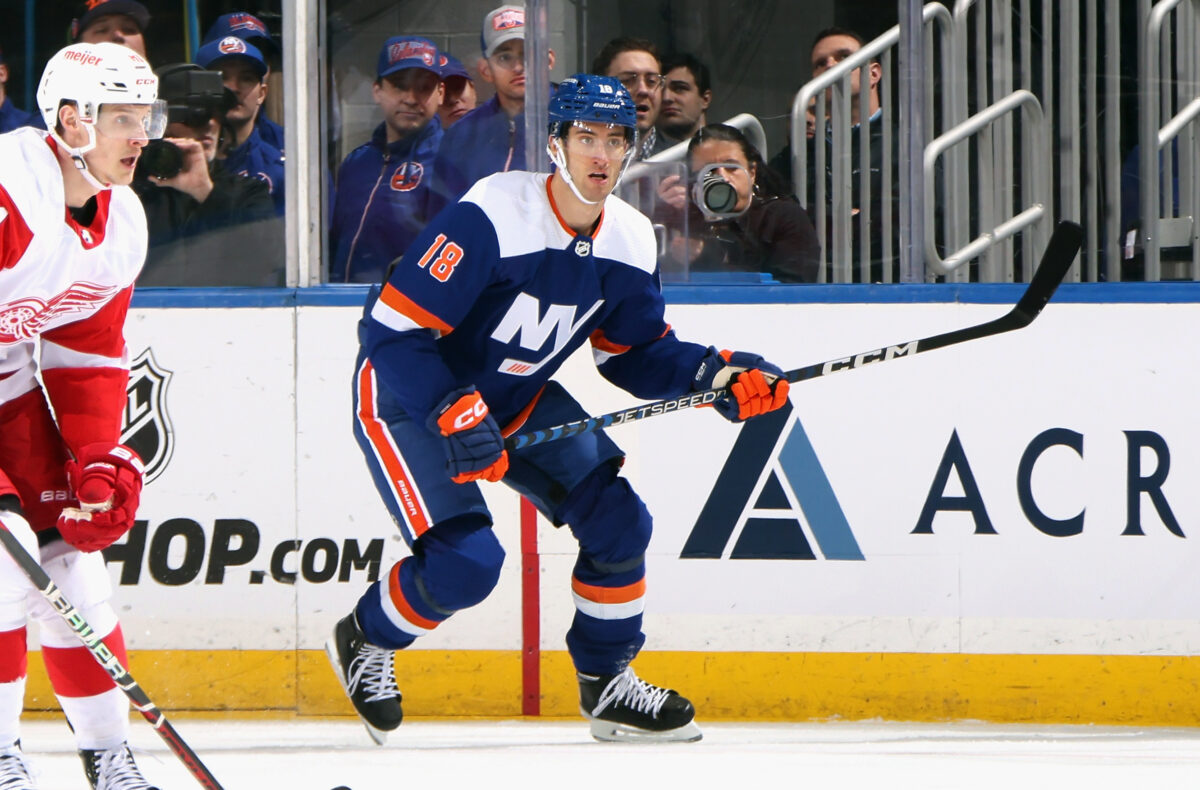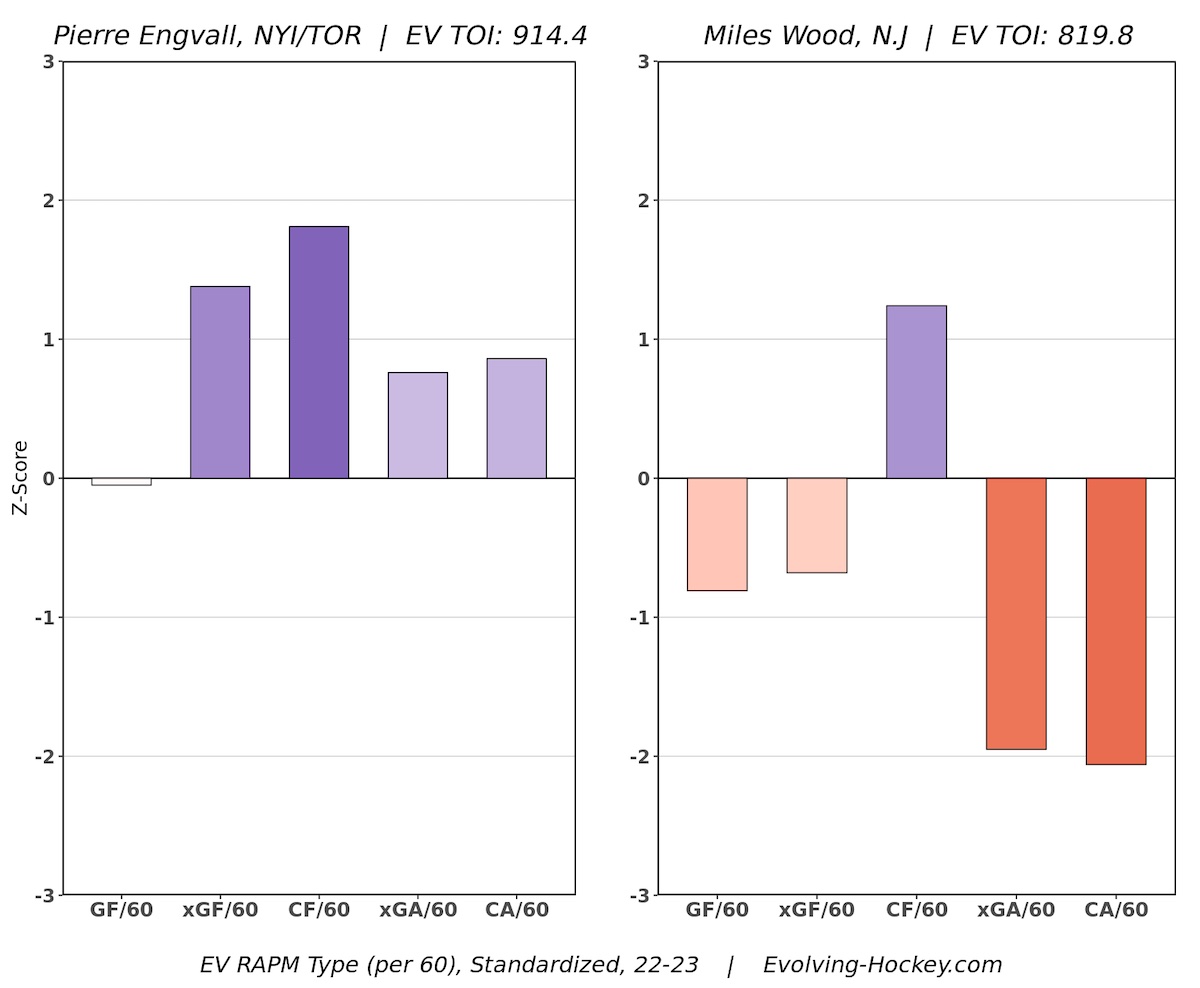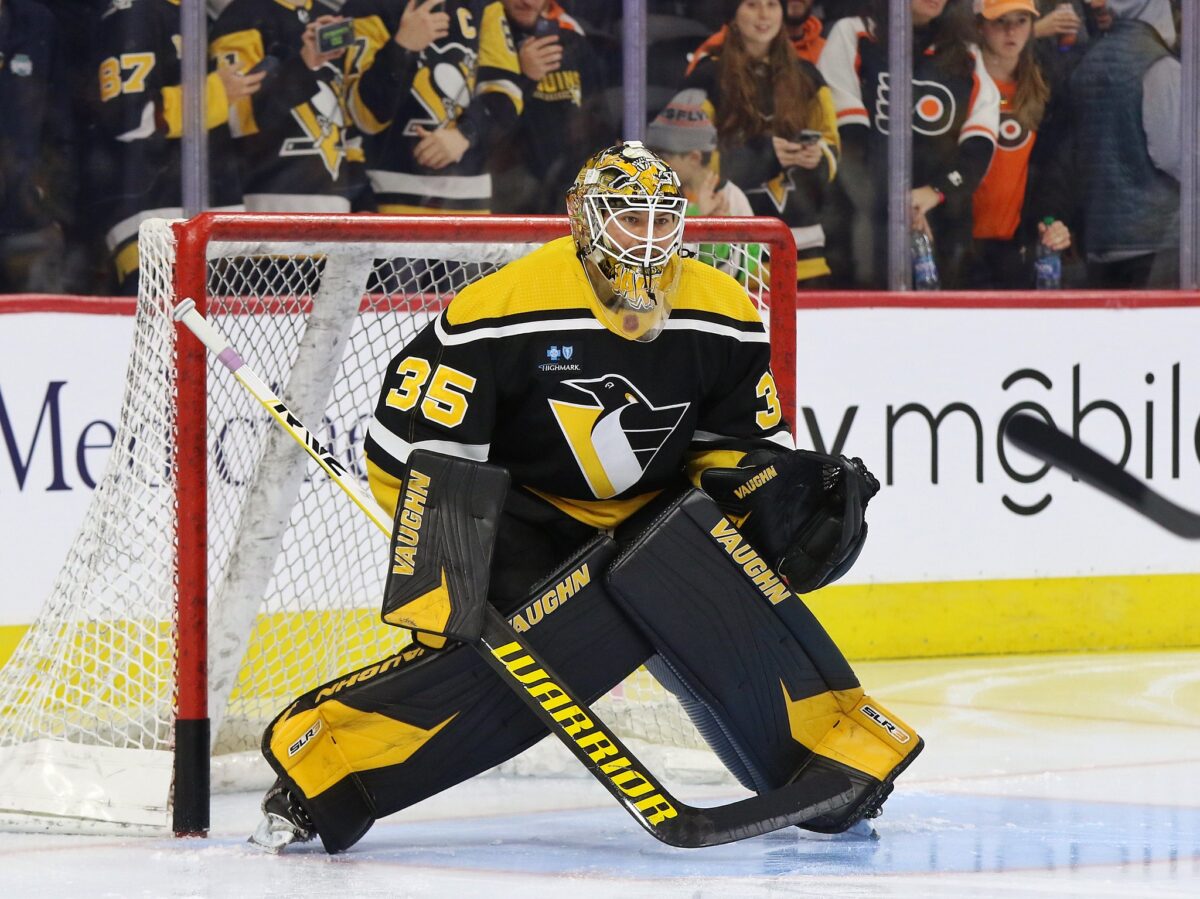Free agency can go one of two ways: incredibly well or incredibly poorly. It all depends on a team’s approach when the market opens on July 1. More often than not, buyer’s remorse is the end result of free agency, with GMs handing out terrible contracts to middle-of-the-lineup players. This year was no exception, as plenty of bad deals got handed out on July 1. Which ones were the worst?
Every Islanders Contract…Except for Sorokin
I don’t know what was more surprising: seeing Lou Lamoriello announce contracts on July 1 or the deals themselves. But aside from Ilya Sorokin’s eight-year extension worth $8.25 million a year, the veteran general manager handed out a few lengthy agreements that could bite the Islanders in the next few years.
We’ll start with Pierre Engvall, who re-upped on a seven-year deal at a cap hit of $3 million. The Islanders acquired him from the Toronto Maple Leafs at the trade deadline, and he produced after the trade, totaling five goals and nine points in 18 games. He skates well for someone his size and fits what the Islanders need up front in their bottom-six.

A $3 million cap hit is quite reasonable for Engvall, but the seven years is where problems arise. He posted a total goals above replacement (GAR) of plus-6.9 in his brief time with the Islanders. But before then, he had never finished with a GAR above plus-3.5 in a single season. He also shot 16.1 percent with the Islanders, above his 11.2 percent career rate. He’s a solid bottom-six winger, but seven years is too much for a player who likely won’t provide much value beyond three or four years of his deal.
Next up is Scott Mayfield, who also signed a seven-year extension, this at a cap hit of $3.5 million. He’s been a solid top-four defenseman for quite some time, and his defensive impacts are still holding up at 30 years old. But he’s a middle-of-the-lineup player who hasn’t posted a GAR above plus-2.6 in a single season over the last four years. Like Engvall, this contract will likely become an issue in three to four years when his defensive impacts start declining.
Lastly, there’s Semyon Varlamov signing a four-year extension at a cap hit of $2.5 million to back up Sorokin. Varlamov has posted a .910 save percentage or better in four straight seasons. But he recently turned 35, meaning he’ll be 39 when his contract expires. There’s nothing wrong with him, Mayfield or Engvall, but they’re all depth players. And the key to coming out of free agency in a good spot is not giving term to depth players, which Lamoriello failed to do this offseason.
Miles Wood
Given the New Jersey Devils’ cap situation entering the offseason, parting ways with Miles Wood wasn’t a surprise. And after signing his six-year deal with the Colorado Avalanche, it was even less of a surprise. His cap hit of $2.5 million is manageable, but as with the Islanders players we just mentioned, don’t give term to depth players.
Engvall is a decent comp for Wood, but the difference between the two is the underlying metrics. Wood finished the season with a GAR of minus-4.7, and his even-strength defense was particularly problematic. When compared to Engvall, it’s not even close:

Wood’s counting totals this past season were fine for a fourth-liner, but there’s no doubt the Devils were worse with him on the ice than when he was off. He had hip surgery that caused him to miss all but three games in 2021-22, and it’s possible he lost a bit of a step from the speedy, physical winger he was before the procedure.
It’s rare to see a savvy organization like the Avalanche making a signing such as this in free agency, so maybe they know something we don’t. But if Wood doesn’t regain form from hip surgery, it’s tough to see them getting value from this contract, even if it’s only for the first half of the deal.
Alex Killorn
Given Alex Killorn’s production this past season, one could have argued he was the best forward available in free agency. As such, he got paid as the best forward in free agency, signing with the Anaheim Ducks for $6.25 million annually over four years.
Killorn finished with 27 goals and 64 points in 82 games this season, besting a 2021-22 campaign that saw him post 25 goals and 59 points in 82 games. There’s no doubting his production and durability over the last two years, but there’s reason to believe the scoring won’t last, especially on a Ducks team that doesn’t have the firepower the Tampa Bay Lightning have.
Related: 2023 NHL Free Agency Tracker
Killorn shot 18.9 percent this season, finishing well above his career shooting rate of 12.5 percent. He also had the highest on-ice shooting percentage of his career at five-on-five. All signs point to him regressing next season, though the Ducks seem to believe that won’t be the case since they gave him top dollar and term.
It’s one thing for a contender to make a play for Killorn and sign him to the contract he did. But it doesn’t make much sense for a rebuilding team like the Ducks, who probably won’t reap the benefits of a productive Killorn when they’re a playoff contender.
They may be trying to change the culture in Anaheim, which is likely part of why GM Pat Verbeek targeted Killorn. But he now takes up 7.5 percent of the Ducks’ salary cap and will be one of their highest-paid players, even after extensions for Trevor Zegras and Troy Terry. The salary cap will rise significantly over the next two years, but the Ducks are unlikely to get any value for his $6.25 million cap hit.
Tristan Jarry
Giving term to goalies has become a thing of the past unless it’s an elite talent like Sorokin. Giving multiple years to goalies with Tristan Jarry’s injury history over the last couple of years is even less of an occurrence. He’s a solid goalie when healthy, but can he be fit enough to live up to the $5.375 million cap hit he’ll have for the next five years?

Jarry had a negative goals saved above expected (minus-2.8) this season, but injuries likely played a part in his struggles. He was one of the better netminders in the NHL a season ago, finishing with a .919 SV% and saving plus-12.8 goals above expected. But his 2020-21 was a struggle, as he gave up 11.8 goals above expected, one of the worst marks in the league.
Goalies are voodoo, which is why giving term to anyone not named Sorokin, Igor Shesterkin, and Andrei Vasilevskiy becomes tricky. Penguins president of hockey operations Kyle Dubas did take a chance on Ilya Samsonov with the Maple Leafs in 2022-23, and it worked out, but that was on a one-year deal. Jarry’s numbers have been inconsistent over the last three seasons. Coupled with his health, and there’s quite a bit of risk in giving him a five-year deal at the cap hit he received.
Joonas Korpisalo
Sticking with goalies, Jarry wasn’t the only netminder to sign for five years this weekend. In desperate need of an upgrade in net, the Ottawa Senators inked Joonas Korpisalo to a five-year deal at a cap hit of $4 million. He had a good 2022-23 season, finishing with a .914 SV% and stopping plus-12.7 goals above expected. But if there was ever a poster child for “goalies are voodoo,” it’s Korpisalo. His 2019-20 season was solid, as he finished with a .911 SV% and was a significant factor in the Columbus Blue Jackets defeating the Maple Leafs in five games in the playoff bubble.
However, Korpisalo’s game fell off after then. In the two seasons between 2019-20 and 2022-23, he never cracked an SV% above .900. He had hip surgery a year ago, which was likely a factor in those struggles. But he had a rough go of it in the playoffs this season, finishing with a .892 SV%. He’s wildly inconsistent, and his player card from JFresh shows how all over the place his game has been:
The Senators are betting that Korpisalo’s hip was the reason for his struggles before 2022-23, and they may be right, based on the upward trend this season. But even after they are, giving five years to a goalie with his track record is quite the risk that has a better chance of backfiring than it does working out.
A two-year deal for Korpisalo would’ve been fine, and even three years would’ve been acceptable, but five years should’ve been a no-go. Just look no further to Jack Campbell, whose five-year deal has already become a problem for the Edmonton Oilers just one year in.
An NHL Free Agency Tradition
The key to coming out of free agency unscathed is not giving term to depth or middle-of-the-lineup players and especially goalies who aren’t elite. Some teams have learned from past mistakes, while others continue to overpay for players in free agency, making for an annual tradition on July 1 that’s likely to continue for years to come.
* * *
Advanced stats from Evolving-Hockey, goalie data from Money Puck